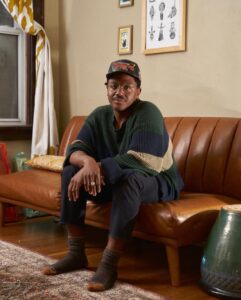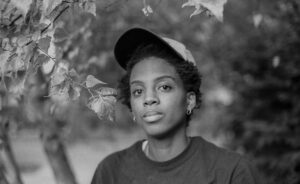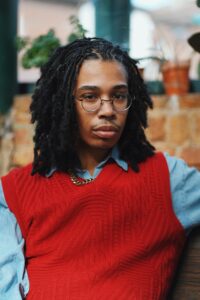Join us for a special film screening hosted by filmmaker Cameron Granger, with guest filmmakers cai thomas and Bobby T. Luck.
We invite you to join us for a special screening of Cameron Granger’s film Before I Let Go, created during his residency at the Studio Museum in Harlem in 2022, alongside Change The Name (2021) by cai thomas, and Was It Your Trigger Finger (2023) by Bobby T. Luck. A short Q&A session will follow the screening.
Before I Let Go is the latest film from artist Cameron Granger. Set in the fictional town of Bad City, 5 years after a giant monster attack leveled the city’s east side neighborhood, the film follows a documentary filmmaker’s experience covering the community’s recovery efforts.
The Before I Let Go Summer Tour is a series of free screenings at several community and artist-run spaces across the midwest and east coast. Each screening is free and features two filmmakers from or making work in each specific venue.
Each stop on the tour is self funded. If you would like to support the programmers of the tour you can do so here. Your donation will go towards travel, guest filmmaker stipends, and each hosting venue.
You can read more about the tour, and see what other venues they’ll be stopping at here.

Cameron A. Granger is Sandra’s son & came up in Cleveland, Ohio. Inspired by the rigorous archival & homemaking practices of his grandmother, Pearl, Granger uses his work as a means to quilt his communal and familial histories, into new, not just potential, but inevitable futures. He’s an alumni of Euclid public schools, Skowhegan School of Painting & Sculpture, and the Studio Museum in Harlem AIR program.

cai thomas is a documentary filmmaker and cinematographer based in Chicago telling stories at the intersection of location, self determination, and identity about Black youth and elders She grew up in Miami’s Liberty City neighborhood and is deeply interested in stories rooted in place. Her film Change The Name which follows young activists organizing in Chicago’s North Lawndale neighborhood premiered at the 2021 Tribeca Film Festival and was broadcast on BET. Her previous film Queenie about a Black lesbian elder in Brooklyn’s Bed Stuy neighborhood premiered at NewFest in 2020 winning the NY Short Grand Jury award and is currently streaming on the Criterion Channel. cai recently completed Beneath The Surface which documents data scientist and journalist Trina Reynolds Tyler investigation into gender based violence at the hands of the Chicago Police Department and is digitally distributed by PBS’ Independent Lens. cai is a proud NeXt Doc Fellow.
An intimate portrayal of Black youth organizing on the west side of Chicago, ‘Change The Name ‘follows a group of 5th graders from Village Leadership Academy as they embark on a campaign to rename Stephen A. Douglas Park after freedom fighters Anna Murray and Frederick Douglass. Over the course of the three-year grassroots campaign the students tackle bureaucratic Chicago Park District systems, underestimations of their capacity to make real change as well as a pandemic and global uprising.

Bobby T. Luck is a visual artist and education activist based in Chicago, IL who works in film, multimedia collage, sculpture, and installation. After relocating to Columbus from Philadelphia he jump-started the Free Skool for Humans initiative, co-founded MINT Collective, and taught collage and film theory workshops across the country. Luck now works as Program Director for Roots & Culture Contemporary Art Center.
Where do your values begin and your influences end? Who told you you weren’t safe? Did you believe them? We have been trained since childhood via pop culture government intervention to pull the trigger for a country that had us constantly in its sites. Prison bed, coffin, or barracks?




